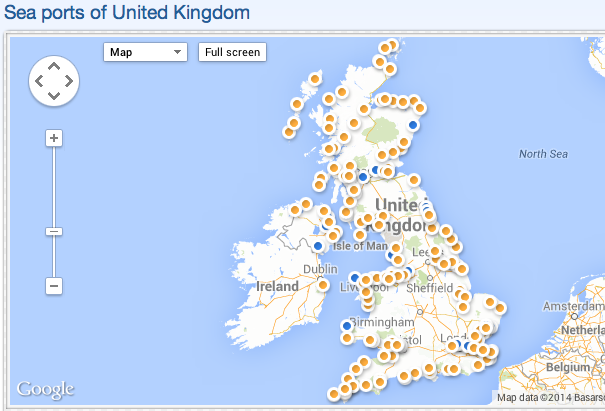- The Port of Felixstowe in Felixstowe, Suffolk is the UK's busiest container port that deals with over 40% of Britain's containerized trade. With a 1.4 mile quay, it was ranked Europe's sixth busiest container port (35th in the world) in 2011.
- The Port of London along the banks of the River Thames to the North sea is the UK's second largest port. This port handles cruise liners, ferries, and cargo of all types (coal, timber, containers, paper, vehicles, etc.). The port stretches along the Thames and has numerous individual wharfs, docks, and terminals.
- The Port of Southampton is a major passenger and cargo port with four cruise terminals. It is the busiest cruise terminal and second largest container port in the UK.
Besides these three major ports, the UK has many ocean ports. This is as to be expected due to the fact that Great Britain is an island surrounded by the North Sea and North Atlantic Ocean.
Land Transportation
Currently, freight rail traffic is low compared to historic levels, but it is growing. In 2011/12, rail freight transported almost 102 million tonnes of goods worth over 30 billion pounds. There are four main freight operating companies in the UK. DB Schenker is the largest. Goods that are transported are things such as coal, food&drink, steel, timber, vehicles, construction materials, and waste.
Passenger rail services in Great Britain are divided into regional franchises run by private companies. Due to the fact that it is offset from the island of Great Britain, Northern Ireland is not included in the railways of the UK. High speed and West Coast Main Lines run up into Glasgow and Edinburgh, Scotland. In 2010, there were 1.33 billion journeys on the passenger rails in the UK.
In the UK, vehicles drive on the left. With an extensive road network, highways extend into Wales, Scotland, and all throughout England. There are about 30,000 miles of main roads, over 2,000 miles of motorways and over 200,000 miles of paved roads.
Air Transportation
There are many regional and international airports in the UK. London Heathrow Airport is one of the busiest international airports in the world. More than half of all air passengers in the UK travel via the five London area airports. Manchester Airport is the largest and busiest of the remaining airports outside of London.
Regional airports have experienced lots of growth recently due to the lower-cost airlines over the last ten years. Air travel is the most popular mode of transportation for visitors both coming to the UK and traveling within the UK.
The international airports are seen with a red logo, domestic airports are seen with a white logo:


No comments:
Post a Comment